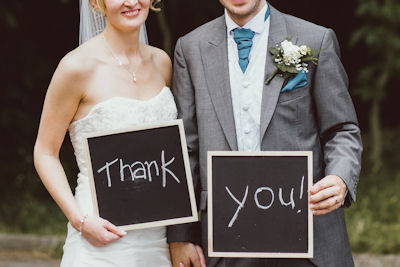How Marriage Equality Will Change Wedding Ceremonies
by Jennifer
Cram - Brisbane Marriage Celebrant ©
(17/01/2018) | Categories: | Wedding Ceremony
| Wedding Planning | Inclusive Wedding |
< previous |
contents
|next
> It is now 2
months since the overwhelmingly YES vote was announced,
just over a month since Marriage Equality was signed
into law, and a week since the first same sex weddings
could take place without special dispensation.
It is now 2
months since the overwhelmingly YES vote was announced,
just over a month since Marriage Equality was signed
into law, and a week since the first same sex weddings
could take place without special dispensation.Changing the Marriage Act to allow same-sex couples to marry could be regarded to be an exercise in assimilation, but that’s by no means the whole story.
This is my prediction – wedding ceremonies will change, but it won’t be a case of the wedding industry merely accommodating same-sex couples. Rather same sex couples will influence, by example, all civil wedding ceremonies in Australia, and this will bring a wonderful bonus that most opposite sex couples won't have seen coming.
Wedding ceremonies will become less traditional across the board as couples realise that the tight hold that tradition and gender stereotyping have had on weddings can be kicked to the kerb, that you can cast tradition aside and still be legally married, that outmoded traditions don’t make a “proper” wedding; love and inclusion do.
On a fundamental level, there is no difference between a “gay wedding” and a “straight wedding” - two people, madly in love, standing up in front of witnesses, declaring that they commit to spending their lives together in a binding relationship. And then celebrating afterwards that they have changed their legal status in a way that the whole world recognises.
All couples, regardless of gender, are required to follow the same process:
- give at least a month’s notice
- sign Declarations of No Legal Impediment to the Marriage
- say some mandated words to one another to create the contract of marriage, and
- sign a Marriage Register and two certificates.
Some wedding venues and wedding vendors may not have the most welcoming attitude towards same-sex weddings. However, this may be from lack of experience in servicing a same-sex wedding, or a lack of understanding about the importance of the vocabulary they use.
Over years of designing non-legal ceremonies, driven by workarounds in response to inequality, discrimination, and normative gender stereotypes, same-sex couples have created rituals and traditions that are already introducing new trends and perspectives into heterosexual weddings.
The pace of change will increase as more and more same-sex couples marry legally and heterosexual couples, who have been constrained by a wedding playbook that includes outmoded traditions, attend same-sex weddings that are very much individual meaningful expressions of an equal relationship and adopt those as a role model for their own weddings, rather than the roles and inclusions that are traditionally defined by gender.
- Aisle etiquette and seating by side will change. Seating will be mixed up, no more bride’s side and groom’s side. The giving away of the bride will become far less common, being replaced by couples choosing to walk down the aisle together, to both be walked down the aisle by significant people, to being walked down the aisle surrounded by loved ones, or not being walked down the aisle at all. And no-one will be asked “Who gives this man/woman” Instead, the blessing and support of significant people, or the whole assembled company will be sought.
- Narrow dress expectations will fall away, with couples wearing what they choose as an expression of themselves, not as an expression of gendered stereotypes.
- Wedding parties (the people who stand up with the couple) will continue to evolve with gender falling away as the primary consideration when choosing who to ask to fulfill this role.
- Admonitions about not seeing the bride on the wedding day before you meet at the altar won’t morph into something similar for one half of the couple (I never want to hear the terms “Bride and Groomette” at an Australian wedding). So breakfasting together, savouring the moment, getting ready together, making their way to the ceremony together, will become more common as couples realise that doing so is not going to cause bad luck, so there is no need for a big reveal.
- Personal vows will be the norm. And those vows will focus on the solemnity of the occasion and the import of what is occurring. They will promise the big things. They will come from the standpoint of mutuality and equality.
